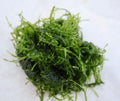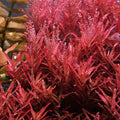7 Important Items for Freshwater Fish Tanks
It may be thrilling to set up a new fish tank, and there are many opportunities to create a stunning aquatic habitat in your house or place of business. Don't allow the vast array of choices and items to discourage you or make you feel overwhelmed.
Although navigating the possibilities might be challenging, if you understand the fundamentals, the process becomes a lot easier. When you're prepared to bring home your new freshwater fish companions, this check list will assist you in making sure everything in your fish tank is in working condition.
1. Fish Water Conditioner
It's crucial that the aquarium water has the good bacteria. Inoculating your tank with the precise kind of bacteria needed to digest and break down the ammonia emitted as waste by your aquarium residents is made easier with the helpof a water conditioner for fish.
A buildup of ammonia in the tank water, which is poisonous, may kill your freshwater fish. By using a water conditioner like any biological booster, you may hasten the bacterial colonization of your system and avoid the harmful accumulation altogether.
2. Fish Filter
A fish filter does not only create necessary water movement but also offers your water three crucial forms of filtration: mechanical, chemical, and biological. Every method of filtration has significant advantages.
When water flows over a fish tank filter pad intended to catch particles, mechanical filtering takes place. Water passes through activated carbon, which eliminates pollutants via chemical filtration. Biological filtration takes place when water comes into contact with a surface that is populated by nitrifying bacteria that are good for the environment and safe for your freshwater fish.
3. Aquarium Heater
If you want to keep tropical fish, you must keep the water constantly warm. And if you're assuming that the tank will stay warm enough since your home's thermostat is set to 72 degrees Fahrenheit, reconsider.
Although your fish will live, providing them with comfort makes them happier and less anxious. The ideal temperature range for tropical fish is between 75 and 80 degrees Fahrenheit, while specific needs depend on the species. With the use of a tool like the an Aquarium Heater, you can maintain the appropriate temperature in your freshwater fish tank.
4. Air Pump
Because it encourages gas exchange between the air and the water, water movement is crucial. The water is kept oxygenated by using an air pump which makes it easier for your fish to breathe. Additionally, it helps to ensure that the water is heated uniformly rather than in isolated areas of stagnant warm water near the heating element.
5. Substrate
While contributing to the beauty of fish tanks, substrate also has practical uses. The substrate at the bottom of your fish tank filters provides an additional surface for the growth of beneficial bacteria. You will also need the right substrate if you want to grow plants that need protected roots.
Substrates come in a broad range of forms, colors, and sizes, so picking the appropriate one for your tank may be challenging. Think about how the aquarium will look when it is finished. This will help you choose the right substrate for your system.
For many freshwater aquariums, polished gravel, such as polished mixed gravel, is an excellent alternative. If you want to retain live plants in your tank, a bioactive substrate might also be a terrific method to accelerate plant development.
6. Lighting
There are several lighting alternatives for fish tanks, and they differ greatly in terms of their size, cost, and look. Find a solution that suits your tank's overall aesthetic as well as your budget, just like with the substrate.
While the initial cost of an LED light is higher, they typically have a longer lifespan than conventional compact fluorescent (CF) bulbs. Almost no heat is produced, and very little energy is used by LED lights.
7. Test strips for fish aquariums
Test the aquarium's water for ammonia, nitrite, and nitrate while you wait for it to cycle before introducing freshwater fish. The pH, hardness, and alkalinity of the water may all be determined using test strips, such as the Tetra EasyStrips 6-in-1 test strips.
Test strips will give you a decent overall view of what's going on in your freshwater fish tank in around 60 seconds. This knowledge is essential if you want to keep your system functioning properly.
The results for nitrite, nitrate, and pH on these test strips are the most critical to pay attention to, particularly with a fresh tank. Nitrate should be as low as practicable, nitrite should be undetectable, and a neutral pH is often safe. However, depending on the species, freshwater fish may survive in a pH range of 5.5 to 7.5.
The other system needs will fall into place after you pick what sort of fish you want to maintain in your aquarium. Researching the fish species you desire is one of the most crucial things you can do. Learn about their native habitat, the water conditions they need, the food they consume, the amount of space they require, and how well they get along with other fish. A suitable environment may be created much more easily with this knowledge.
Aquarium-keeping is fun, particularly if you're ready. Do your research, go slowly, and enjoy the journey!
















